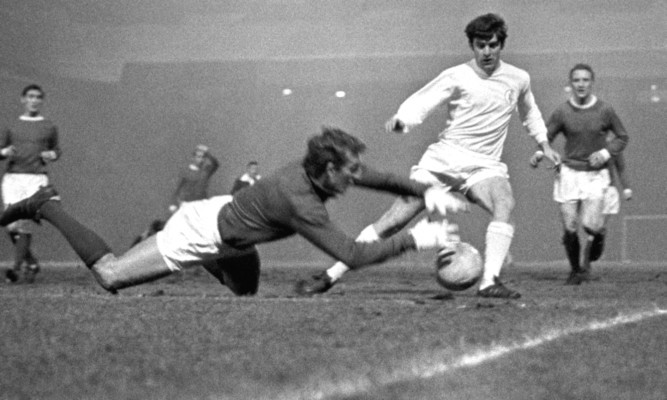
Peter Lorimer was just 15 years and 289 days when he made his first-team debut for Leeds United this week in 1962.
By the time he’d finished his second spell with the club 24 years later, he’d played 779 times and had become the club’s record scorer with 255 goals which wasn’t bad considering the Scot never played as a striker!
Lorimer was one of the lynchpins of the Don Revie era at Elland Road, helping to turn the Yorkshire club from a run-of-the-mill Second Division team to one of the most-feared and at times hated outfits in Europe.
During his first 17-year spell, Peter won the league twice and finished runners-up four times.
He also won an FA Cup, a League Cup and two Inter-Cities Fairs Cups.
In these days of buzzwords, Lorimer had his own USP Unique Selling Point.
It was the power of his shot, officially recognised at the time as the hardest in football.
It earned him several nicknames Lash, Hot Shot and Thunderboots among them all.
It wasn’t uncommon to see his right-footed drives exceeding 90mph and one penalty was recorded at 107mph.
Peter was from Dundee and his exploits in Scottish schoolboy football had alerted Matt Busby’s talent scouts at Manchester United.
The story goes that United offered Lorimer’s parents £5,000 for him to join the club.
However, they returned the money as he wanted to join Leeds, the club who had first shown an interest in him.
Though he made his debut before his 16th birthday, he didn’t feature in the Leeds first-team picture again for two years, as Revie relied on experience to win promotion to the top flight and establish the club there.
But in the 1965-66 season, he was top scorer with 19 goals in 34 games.
Leeds won the League Cup-Fairs Cup double in 1968 their first major trophies under Revie and Lorimer scored 30 goals.
The following year, they won their first-ever title and Lorimer his first Scotland cap.
When Revie left to manage England in 1974, the team he built slowly broke up and as experienced teammates retired or moved on, Lorimer was left as the old head helping a new generation.
He eventually left in 1979, moving to Canada to play for Toronto Blizzard and Vancouver Whitecaps.
He returned to Leeds United in 1983, aged 37, with the club back in the Second Division.
He broke the club’s goalscoring record and retired just before his 40th birthday in 1986.

Enjoy the convenience of having The Sunday Post delivered as a digital ePaper straight to your smartphone, tablet or computer.
Subscribe for only £5.49 a month and enjoy all the benefits of the printed paper as a digital replica.
Subscribe